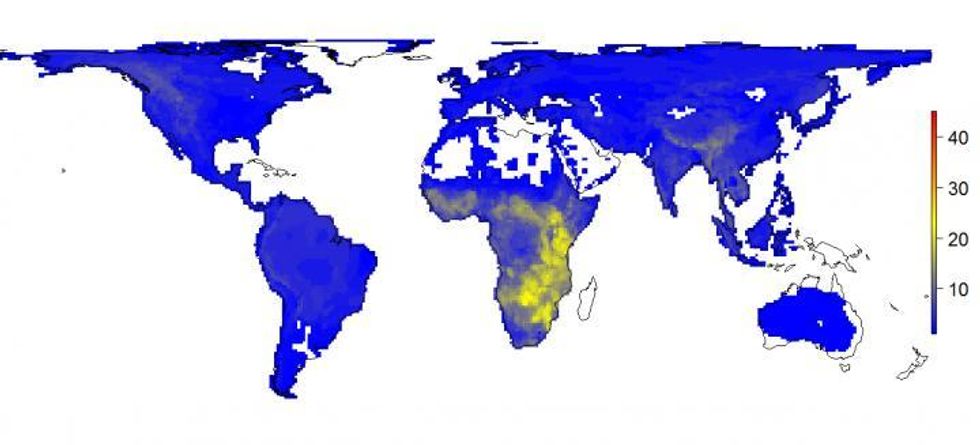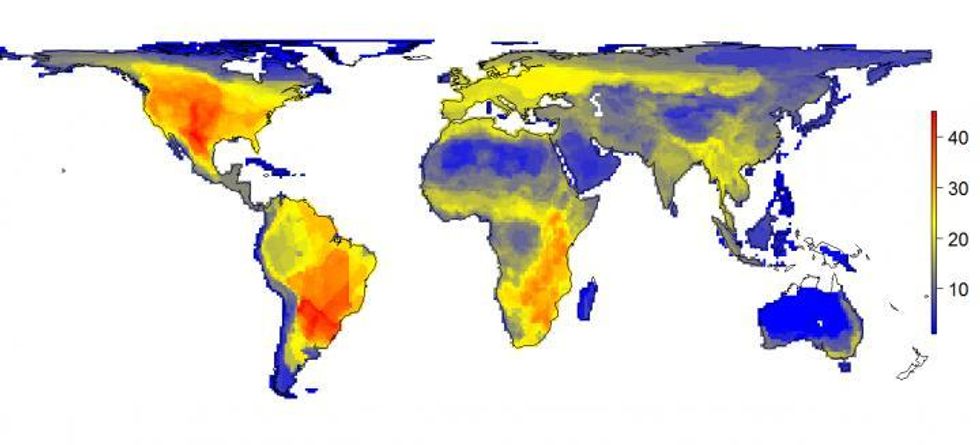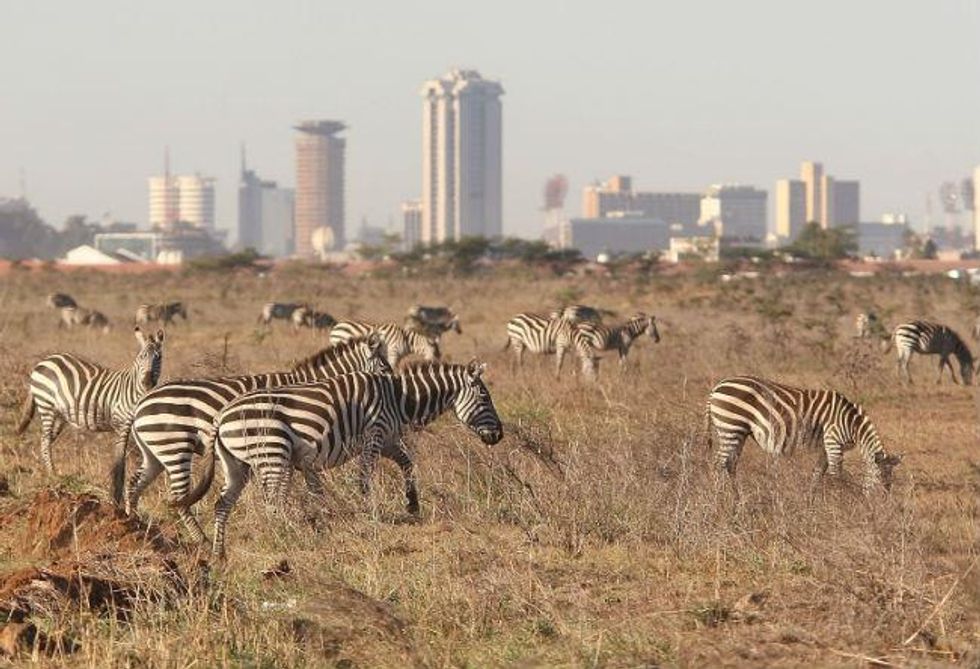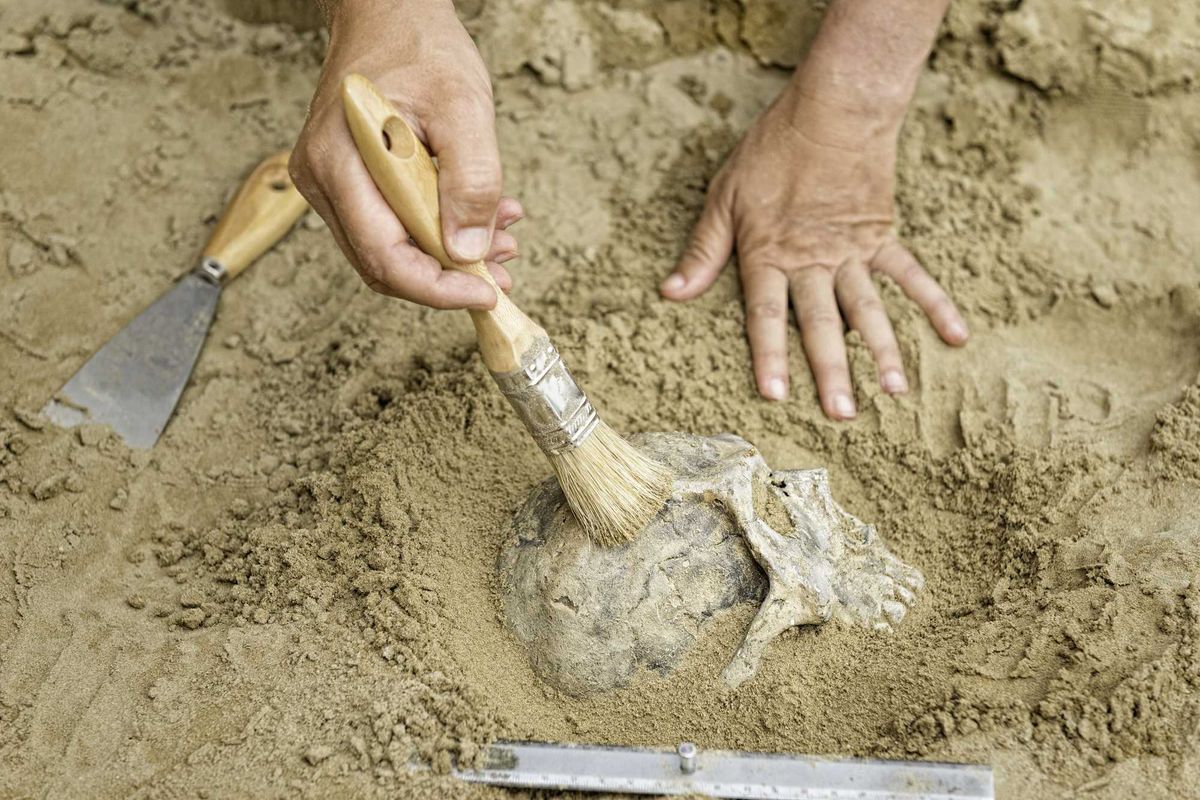News
Matthew Champion
Aug 23, 2015
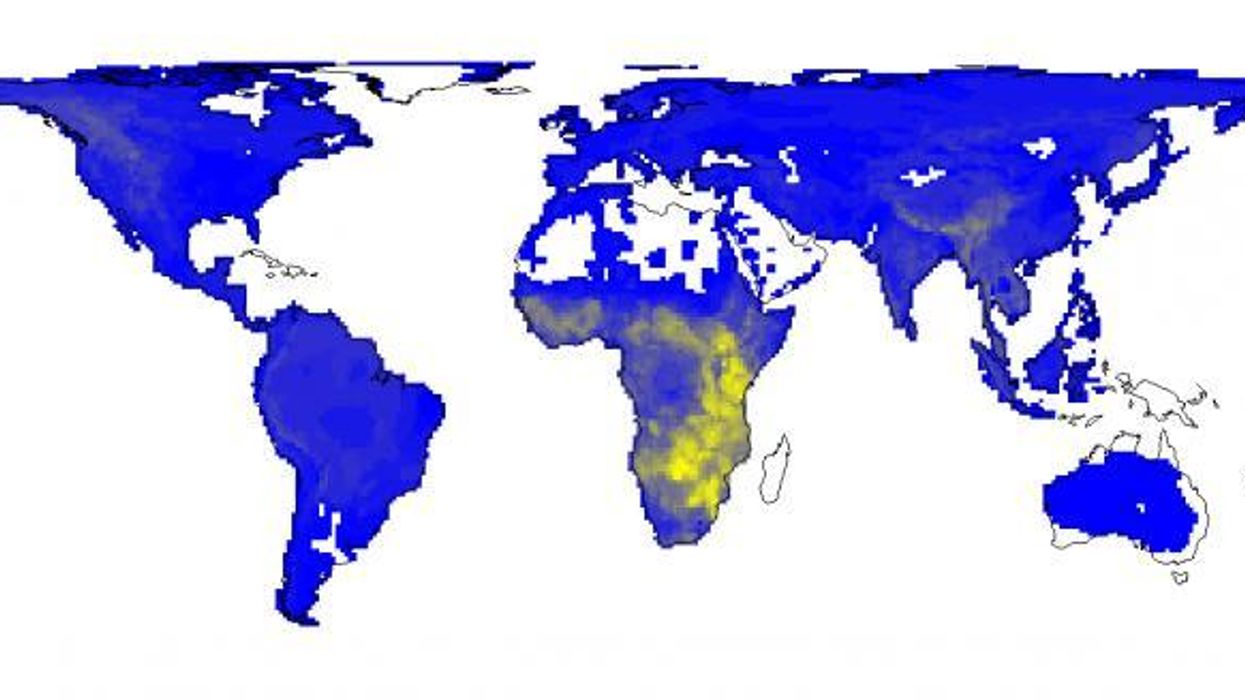
TL;DR: There would be a lot more large animals around
This map shows the current diversity of large mammals in the world. You can see that large numbers of species exist only in Africa.
Here's the same map, but modelled on the basis that modern humans had never existed.
Put simply, Danish researchers behind a new study believe that without humans, most of northern Europe would be home to bears, elephants and rhinoceroses: areas where they were historically hunted to extinction by Homo sapiens.
Professor Jens-Christian Svenning of Aarhus University said:
Northern Europe is far from the only place in which humans have reduced the diversity of mammals - it's a worldwide phenomenon. And, in most places, there's a very large deficit in mammal diversity relative to what it would naturally have been.
The lead author of the study, published in Diversity and Distributions, Soren Faurby, added:
Most safaris today take place in Africa, but under natural circumstances, as many or even more large animals would no doubt have existed in other places, e.g., notably parts of the New World such as Texas and neighbouring areas and the region around northern Argentina-Southern Brazil. The reason that many safaris target Africa is not because the continent is naturally abnormally rich in species of mammals. Instead it reflects that it's one of the only places where human activities have not yet wiped out most of the large animals.
The researchers hope their study can help future nature restoration and conservation attempts.
Top 100
The Conversation (0)
